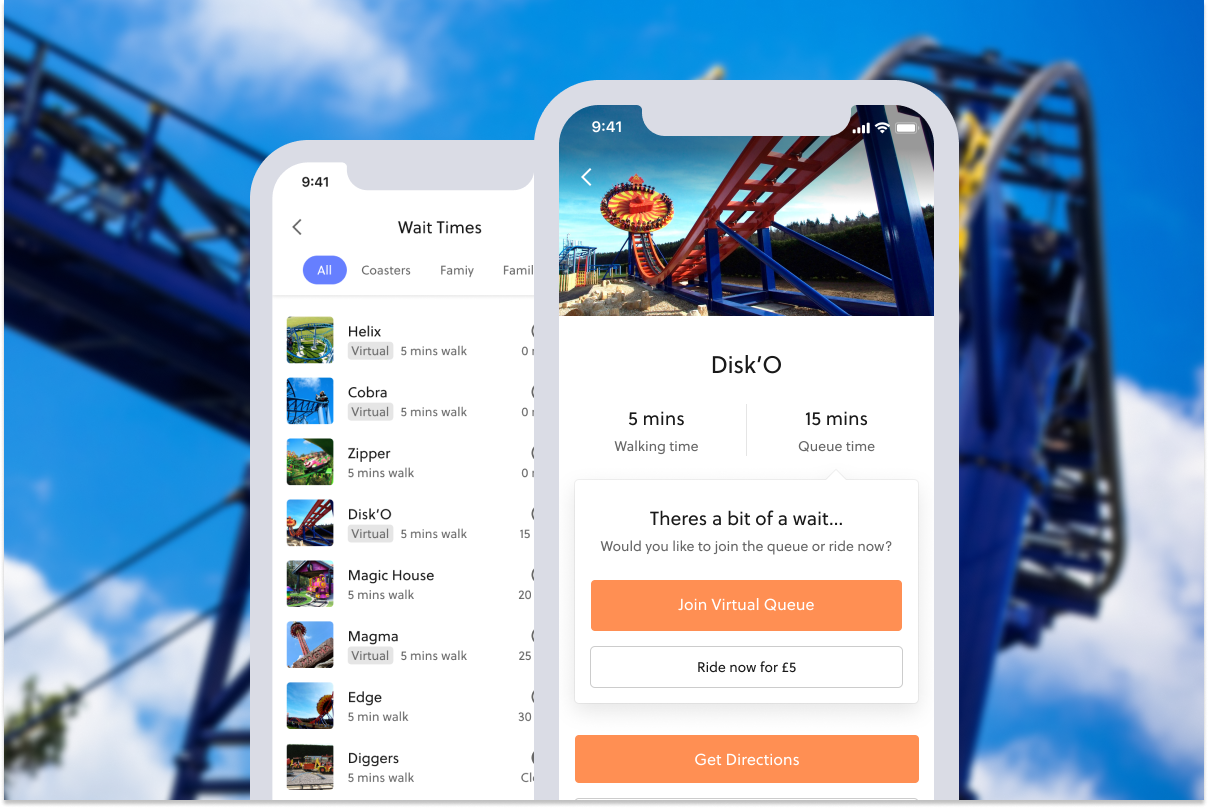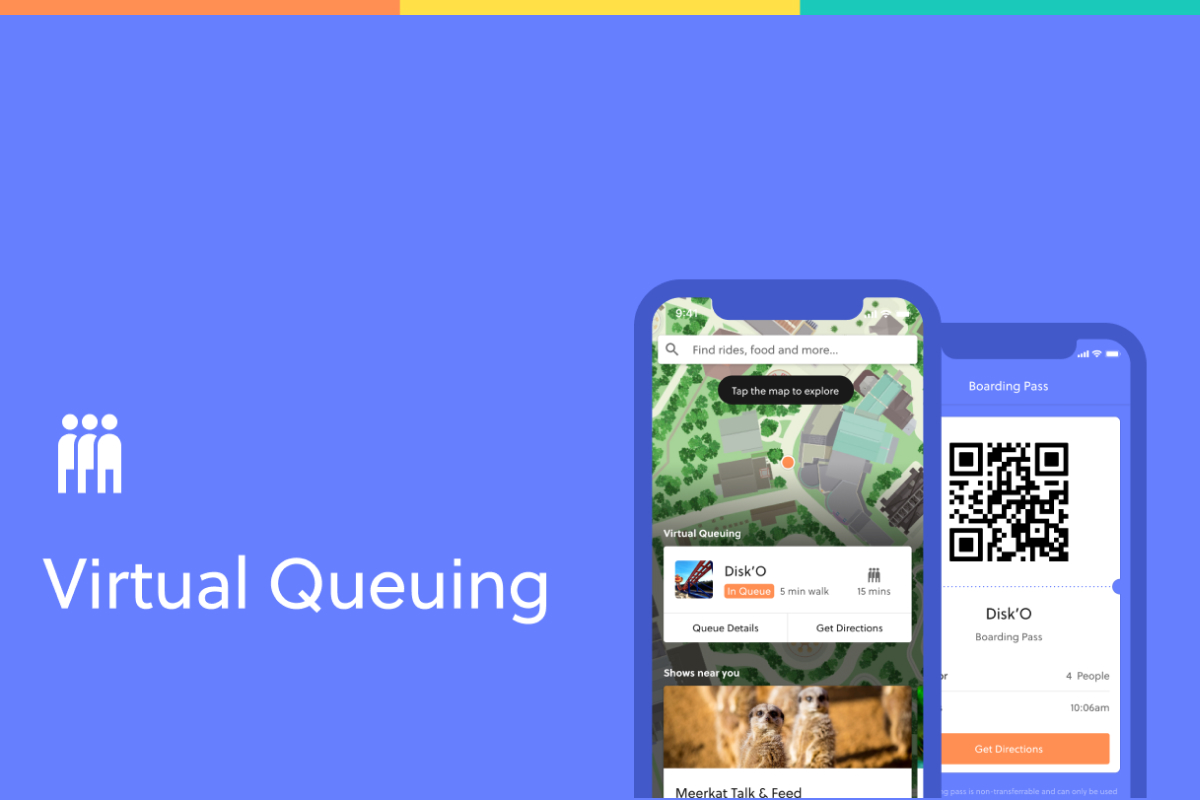
Virtual queuing quickly became a hot topic in 2020, thanks to its ability to solve social distancing challenges. However, virtual queuing was already on the radars of savvy operators and as we emerge from COVID-19, it stands to offer even more value. For theme parks, sustainable growth after reopening will depend on turning digital solutions into long-term business assets. Far from being a temporary fix, a well-scoped and feature-rich virtual queuing solution should deliver a real long term return on your investment.
Planned properly, virtual queuing can boost revenue, improve guest experience, and provide you with valuable visitor insights — benefits that won't stop when COVID-19 is a distant memory. Nonetheless, gaining these kinds of long term benefits doesn't happen by accident.
To help you scope out the best virtual queuing solution for you, here are five questions that an effective virtual queuing solution should answer.
While it’s true that people don’t want to wait in long physical lines, complex and disconnected digital systems can create more frustration for guests than queuing ever did.
If your guests have to use one system to buy a ticket, another to order their lunch, and yet another to queue virtually, they won’t be happy with the disjointed experience this creates. Similarly, a system with a complicated user interface may challenge guests too much, even those that are tech-savvy, something which can do profound damage to your brand. According to an Oracle report, more than 1 in 2 Millennials would stop being a customer of a brand after a negative experience with its app. With that in mind, it’s crucial that your solution is intuitive, convenient, and user friendly.
What about guests who may not want to use a smartphone? To avoid excluding these guests, consider offering alternatives like wristbands that work with the in-app solution.
Alongside this, it’s important to note that your park does not necessarily need to make all queues virtual. In some cases, the queue itself can be integral to building anticipation and immersing guests in the story. In other cases, it may simply be overkill for less popular rides & attractions. (Take a look at our article where we explore the pros, cons and use cases for physical queuing.)
Ideally, you want to opt for a solution that supports both virtual and physical queues. That way, guests can enjoy less popular rides with smaller physical queues while they wait in line for the more popular ones virtually.
A virtual queuing solution that no one uses isn't a solution, it's a cost. To make sure guests actually use virtual queuing, your virtual queue platform needs to add value to your guests' visits. After all, the last thing a guest looking to have fun at your park wants to do is spend time trying to figure out how to queue. To aid rather than hinder a visit, guests need to get a seamless experience.
The best solution will also offer more value than just virtual queuing to boost user adoption. For instance, an app that spans the entire guest journey can deliver multiple benefits throughout the experience. With a mobile guest app, visitors can:
Facilitated in this way, your virtual queuing solution ties into a seamless, on-brand experience. Ideally, guests should see your solution as an easier way of getting onto their favourite rides rather than a digital barrier.
As we have covered in a previous article, the psychology of queuing is a complex thing. To summarise, it's not always a question of a queue being too long, but more to do with fairness.
A virtual queuing solution should be as fair and accurate as a physical queue. For example, a virtual queue system that allows guests to join several queues at the same time is not reflective of how a typical theme park experience works.
Groups joining multiple queues simultaneously from different phones may not only jeopardise the notion of “fairness” but also inaccurately inflate wait times. This, in turn, will result in other guests getting on significantly fewer rides. To prevent this kind of abuse, parks should ensure that their solution allows validation options such as emails, tickets, or QR codes.
Speaking of wait times, accuracy is vital. If you overestimate wait times, you could end up with ride trains going round half-empty because you haven’t called enough guests forward to the ride in time. In contrast, if you underestimate wait times, guests who thought they would get to ride next will be forced to wait longer.
No matter how accurate your wait times, unexpected issues outside your control are bound to arise once in a while. Whether it’s a ride breaking down, bad weather causing delays, or unscheduled cleaning, it’s vital you have a system in place that enables you to compensate guests for the time they wasted, even if they were queuing in a virtual and not physical line.
A virtual queuing solution, should account for this by providing guest recovery options. A comprehensive solution should offer guests both automatic compensation as well as manual options that let you credit guests with free ride passes in case of an unforeseen event.
By making it up to your guests for waiting in line for a ride they may now not get to go on, you are significantly reducing the risk that they will leave a bad review.
Data is undoubtedly the most valuable resource for forward-thinking organisations, but acquiring actionable insights is often tricky. However, a virtual queuing solution should be able to do just that — provide your team with data they can use to make your park better.
A comprehensive solution can give you an instantaneous snapshot of things like:
This data can then be combined and explored to allow you to answer questions like how does queue time influence guest satisfaction and how many rides does my average guest go on? The real-world value gained from this kind of insight will turbocharge your decision-making process.
Deploying a truly effective virtual queuing experience involves more than an out-of-the-box solution. Instead, you need to look more holistically at where your park and your guests can gain the most benefit from technology and then look at where any solutions like virtual queuing, fit into that wider digital offering and experience.
Smart digital technology use isn't something that happens by accident — understanding the how, why, and what will pay dividends for your park both now and down the line.
Want to learn more about virtual queuing? Check out our walk-through of how our virtual queuing solution works.

